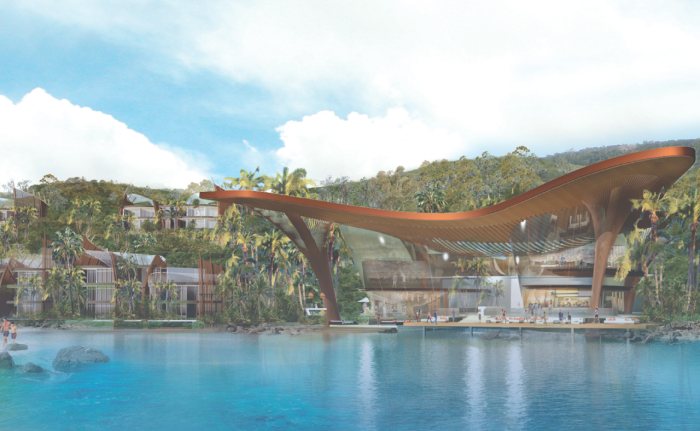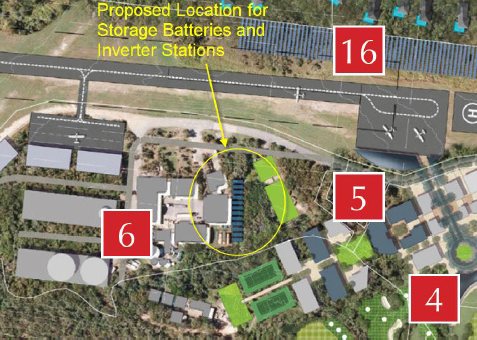
Lindeman Island Resort Redevelopment | White Horse Australia Lindeman
Redevelopment of Queensland’s Lindeman Island Resort could incorporate a significant level of solar power and battery storage according to a draft environmental impact statement (EIS) released on the weekend.
Lindeman Island’s resort has been out of action since 2012, following substantial damage wreaked by Cyclone Yasi in 2011.
White Horse Australia Lindeman has proposed a $583 million redevelopment and expansion consisting of three resorts, a tourist villa precinct and luxury camping facilities. The projects will create 300 jobs each during construction and 300 operational jobs once completed.
Operating all that infrastructure is going to require a lot of energy. When the resort was operational previously, all electricity was supplied by diesel generators located at the island’s power-house. Load demand for the new development is estimated to be around about 4 times that of the existing resort.
A previous report (2015) looked at three options for the new development.
- Grid power supply from the mainland
- 100% diesel generation
- Hybrid diesel-solar generation
The up-front cost of the mainland supply ($108,135,500) was estimated at more than 7 times that of the hybrid diesel-solar generation option ($14,100,000). However, annual running costs would have been around 10% cheaper. The all-diesel option up-front cost ($5,550,000) was far cheaper than hybrid diesel/solar, but annual costs much higher ($5,256,000 vs $3,604,000).
Hybrid Diesel-Solar + Storage The Preferred Option
White Horse Australia directed a further investigation of the hybrid diesel-solar option, with view to fulfilling its vision of developing a world-class eco-resort. The company that undertook the investigation was Cardno, an infrastructure and environmental services firm.
The system studied by Cardno comprises a mini-grid consisting of solar panels, large scale battery storage and diesel generation.
Cardno analysed and modelled the hybrid system on a number of scenarios offering various levels of solar electricity generation – from 35% to around 93%. Cardno found a system with a target of ~75% renewables ratio provides the best bang for buck, but based on the latest masterplan the level likely to be achieved is between 35% to 44% given the limited land available for ground-mount solar panel arrays.
Roof-mounted solar panels would be located around the central village, retail precinct, staff accommodation and the aircraft hangars, enabling minimum capacity of approximately 3 MW peak. A further 2.7MW capacity could be installed on available land area in the form of ground-mount solar arrays.
Cardno states the existing powerhouse area is ideally suited to house a central energy storage system, power management and mini-grid control systems.
The firm says the estimated capital investment for a level of 35% to 44% of electricity provided by solar power is between $15M to $25M, with an estimated payback period between 3 to 8 years.
The Queensland Government has welcome the EIS.
“The redevelopment is consistent with the Palaszczuk Government’s Advancing Tourism plan to drive growth and jobs in the tourism industry. However, it is within the Great Barrier Reef World Heritage Area and it’s important that appropriate safeguards are in place to protect the Reef,” said State Development Minister Dr Anthony Lynham.
Public comment on the Lindeman Island resort Draft Environmental Impact Statement is invited and open until 4 September 2017.


 RSS - Posts
RSS - Posts



Speak Your Mind